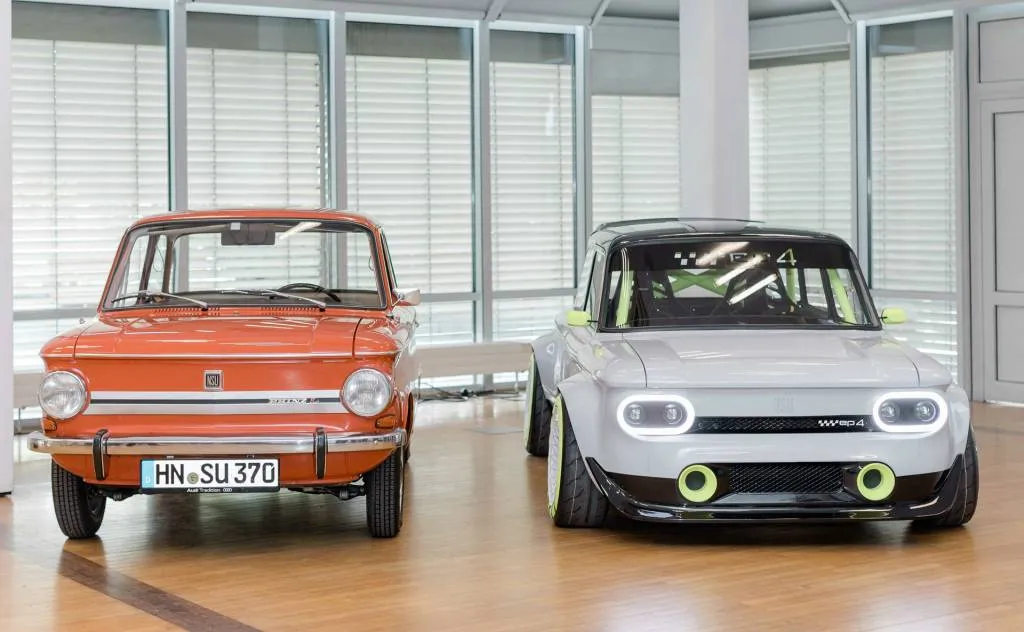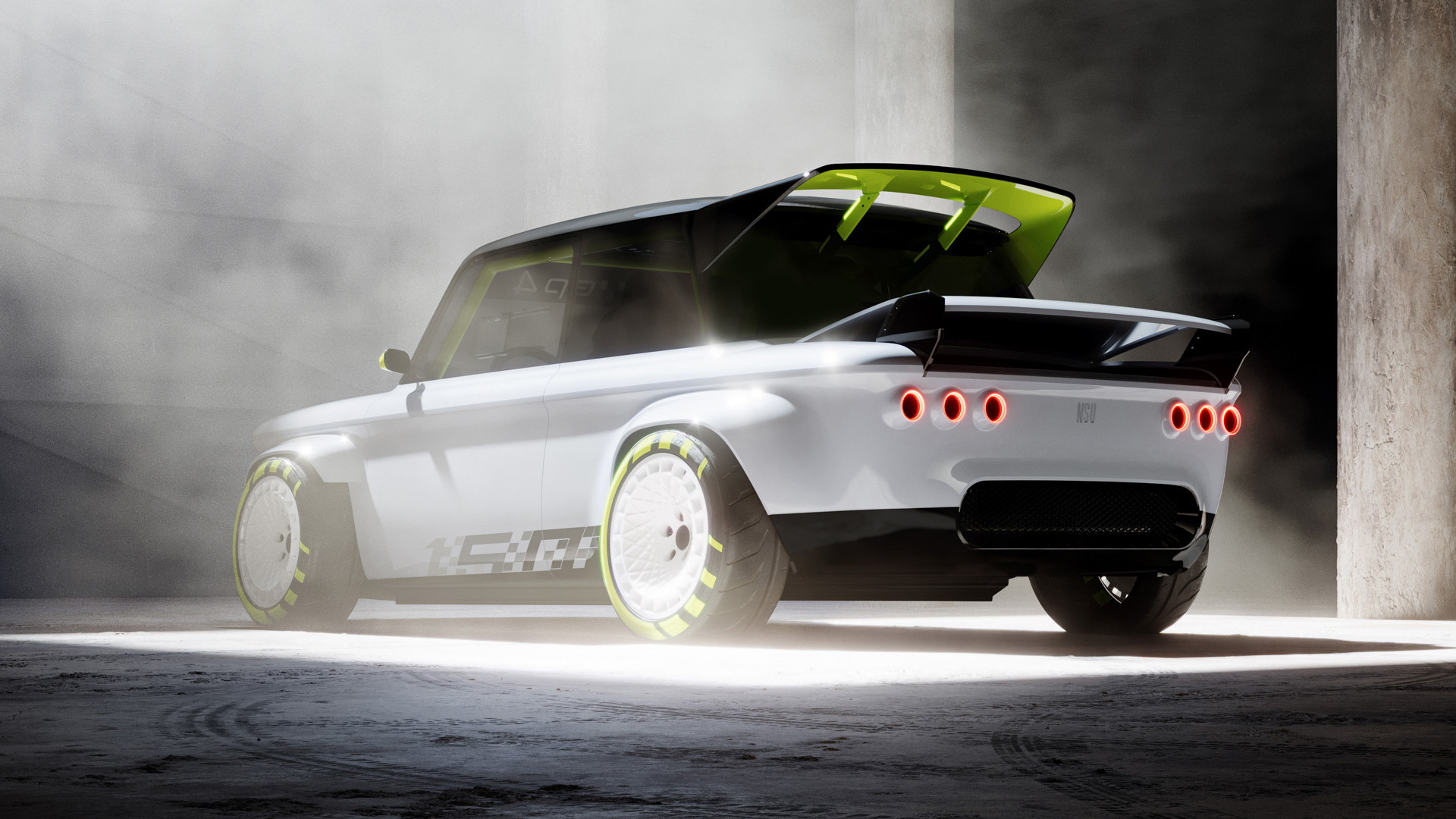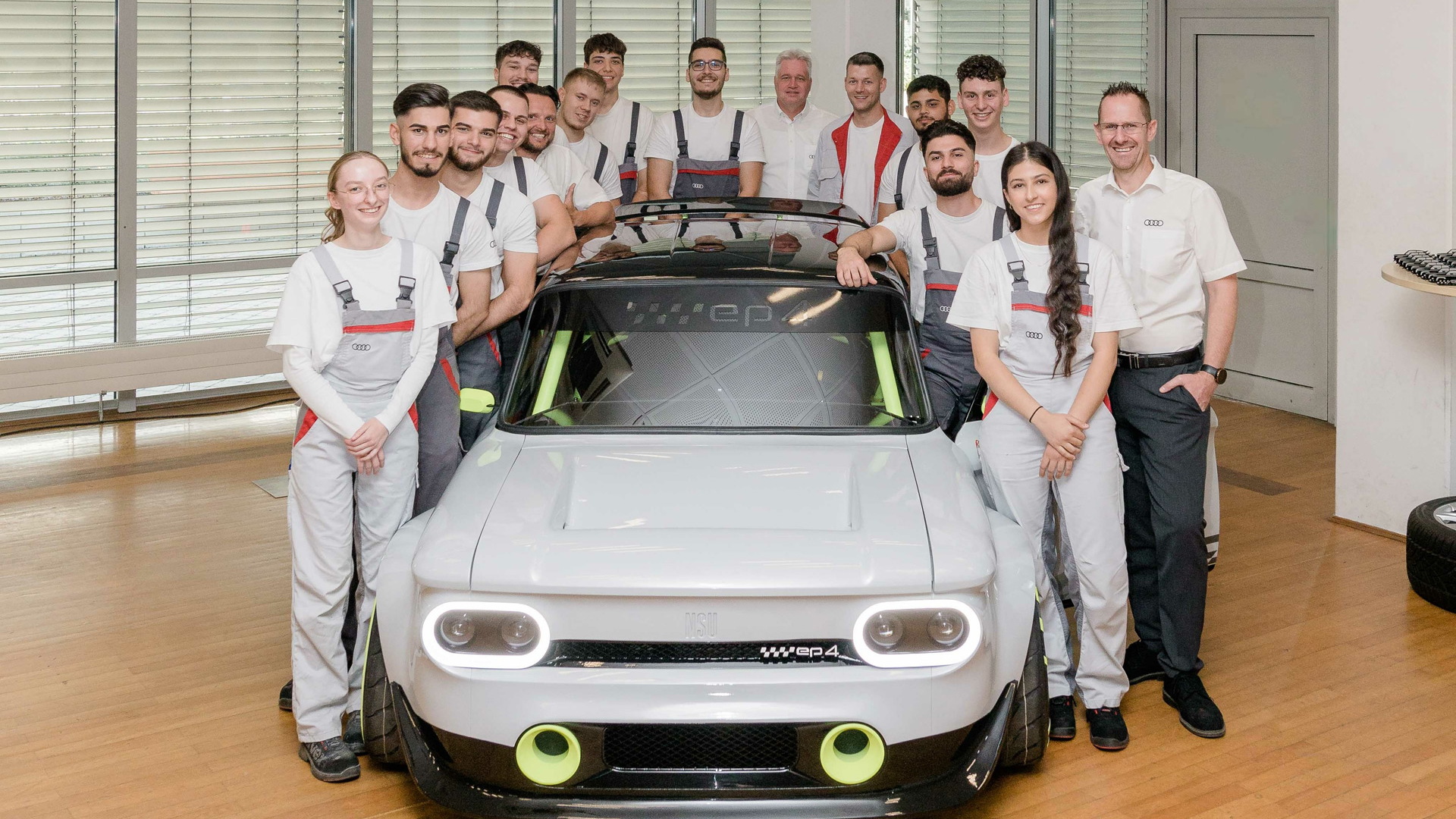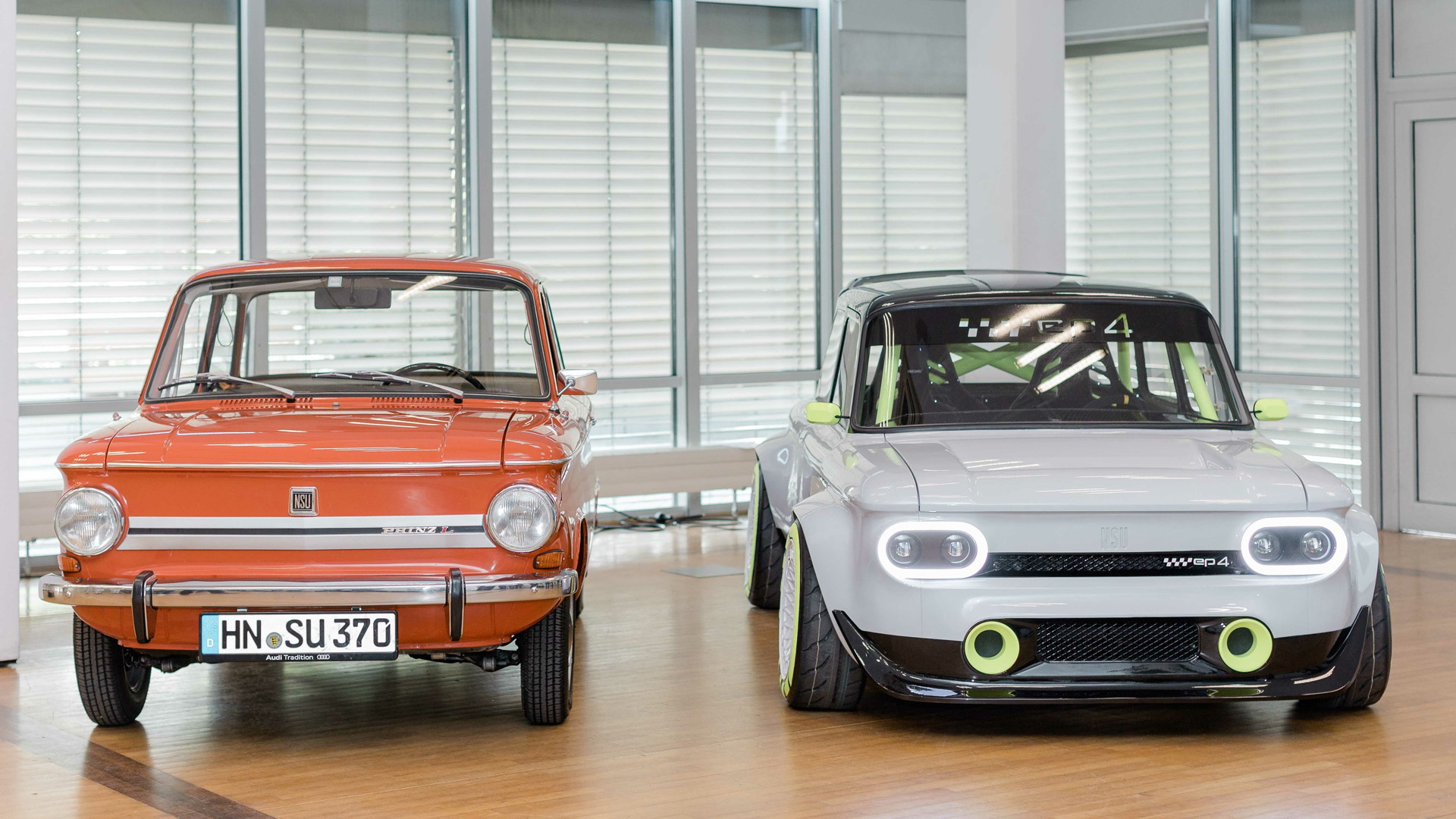Audi has turned the humble NSU Prinz 4 from the 1960s/early '70s into a wild EV concept.
Revealed on Saturday, the one-off vehicle was a project undertaken by apprentices at Audi's plant in Neckarsulm, Germany, to mark 150 years of production at the site.
"We wanted to build a car that was not only fast and looked cool but also honored the 150th-anniversary of the site," Dean Scheuffler, one of the apprentices involved in the project, said in a statement.
Audi wasn't around 150 years ago, but the site was originally home to production of NSU sewing machines and later bicycles and motorcycles. NSU eventually moved into car production starting in 1905, including launching the first rotary-powered car in the form of the 1964 Spider (also referred to as the Sport Prinz). That was three years before Mazda launched its first rotary car, the Cosmo 110S.

Audi EP4 concept based on the NSU Prinz 4
Although NSU survived the Second World War, it was acquired by Volkswagen Group in the late 1960s and merged with fellow VW Group brand Auto Union. The merged entity later became Audi.
NSU's Prinz 4 was launched in 1961 and built until 1973, making it one of the final NSU-branded vehicles. The tiny coupe was powered by an air-cooled, rear-mounted, 2-cylinder engine. In the modern concept, dubbed the EP4 (Electric Prinz 4), the 30-hp engine has been replaced by a 236-hp electric motor borrowed from an E-Tron SUV (now the Q8 E-Tron). The tiny concept doesn't feature the E-Tron's massive battery, though. Instead, a smaller unit was borrowed from a plug-in hybrid Q7 variant sold overseas. It sits in the area where the car's fuel tank normally resides.
Building the concept was no easy task, but it gave the apprentices valuable experience. After stripping the donor vehicle and treating the remaining rust, the apprentices modified the floorpan of an Audi A1, including the brakes and axles, to fit the Prinz 4. The modification was required due to the big increase in horsepower, Audi said.
The apprentices used 3D printing to create many of the one-off parts used on the concept. This included the interior, where custom instruments and displays were installed. A computer presents information such as remaining charge and speed information on the displays, and also performs diagnostic tasks.





